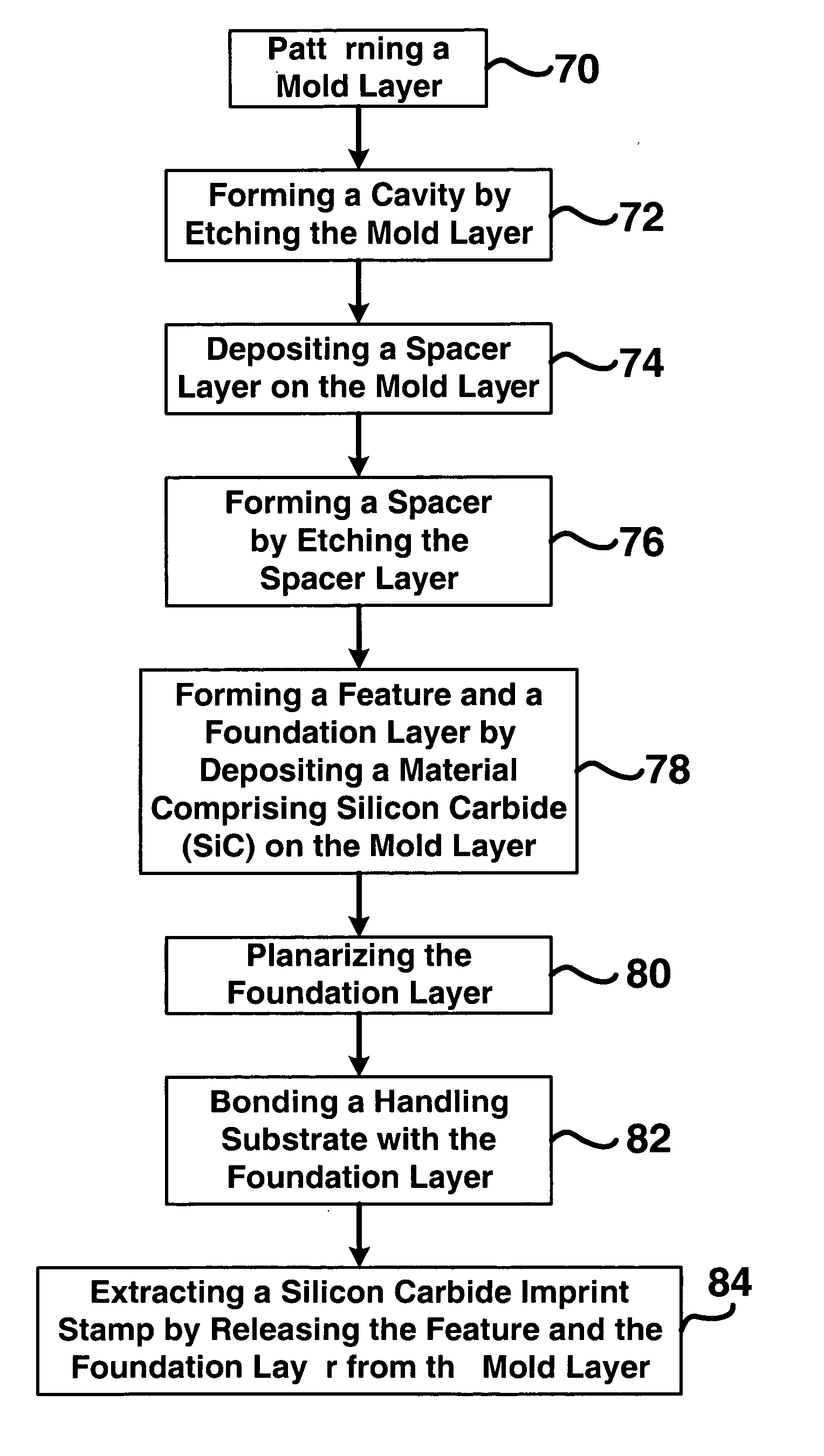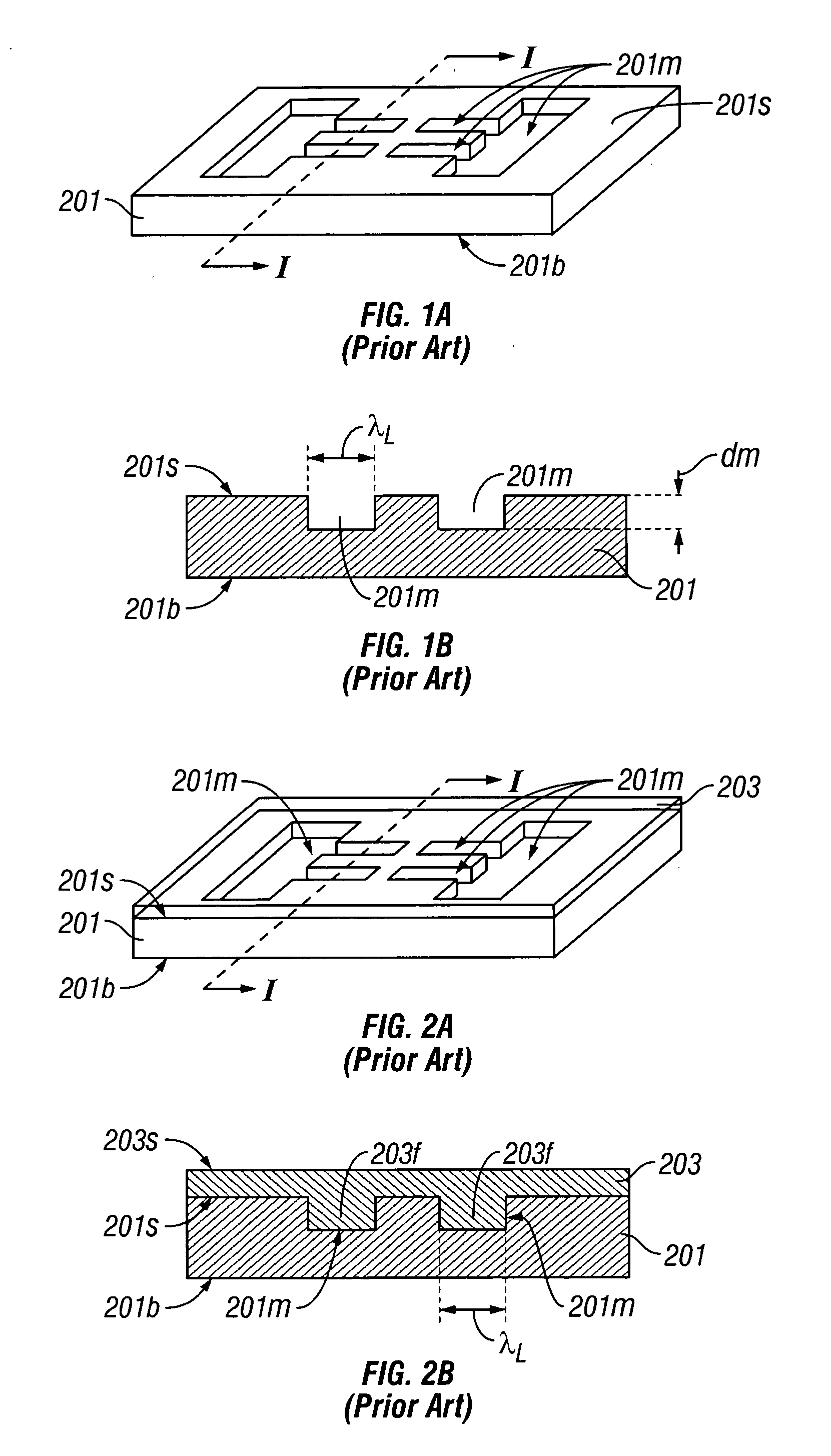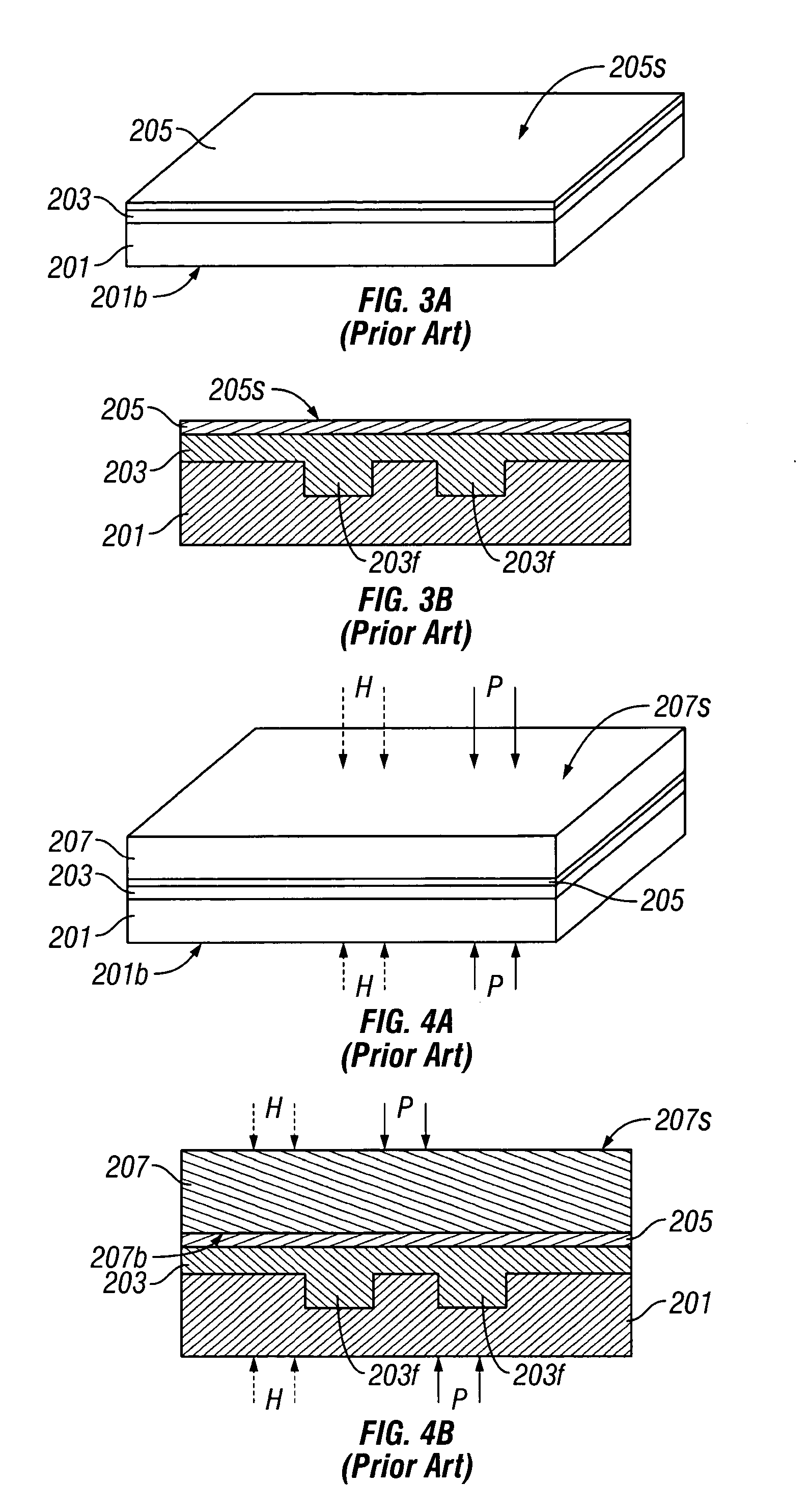Silicon carbide imprint stamp
a technology of imprint stamps and silicon carbide, which is applied in the field of manufacturing methods of hardened imprint stamps, can solve the problems of reducing the accuracy of the pattern that is imprinted, the cost of manufacturing the imprint stamp b>200/b> is not recouped, and the micro-casted shape is lost, etc., to achieve the effect of recovering the cost of manufacturing silicon carbide imprint stamps and increasing service li
- Summary
- Abstract
- Description
- Claims
- Application Information
AI Technical Summary
Benefits of technology
Problems solved by technology
Method used
Image
Examples
first embodiment
[0051] In FIG. 7, the method of fabricating a silicon carbide imprint stamp includes patterning 70 a mold layer and then forming 72 a cavity in the mold layer by etching the mold layer. A spacer layer is deposited 74 on the mold layer and a spacer is formed 76 by etching the spacer layer. A feature and a foundation layer are formed 78 by depositing a material comprising silicon carbide (SiC) on the mold layer, followed by planarizing 80 the foundation layer. A handling substrate is bonded 82 to the foundation layer. A silicon carbide imprint stamp is formed by releasing 84 the feature and the foundation layer from the mold layer.
second embodiment
[0052] In FIG. 8, in the method of fabricating a silicon carbide imprint stamp, after the planarization 80 as described above in reference to FIG. 7, a glue layer is deposited 90 on the foundation layer. A handling substrate is bonded 92 to the glue layer, followed by releasing 94 the feature and the foundation layer from the mold layer to form silicon carbide imprint stamp.
[0053] In FIGS. 6A and 6B, a silicon carbide imprint stamp 10 includes a handling substrate 15, an optional glue layer 17 connected with the handling substrate 15 and a foundation layer 11 connected with the glue layer 17. If the glue layer 17 is not included, then the foundation layer 11 is connected with the handling substrate 15 (see FIG. 10E). The foundation layer 11 includes one or more features 12 that are connected with the foundation layer 11. The foundation layer 11 and the features 12 are a unitary whole. That is, they (11, 12) are a single piece that is formed as a unit from a micro-casting process tha...
PUM
| Property | Measurement | Unit |
|---|---|---|
| feature size λL | aaaaa | aaaaa |
| feature depth dm | aaaaa | aaaaa |
| feature size | aaaaa | aaaaa |
Abstract
Description
Claims
Application Information
 Login to View More
Login to View More - R&D
- Intellectual Property
- Life Sciences
- Materials
- Tech Scout
- Unparalleled Data Quality
- Higher Quality Content
- 60% Fewer Hallucinations
Browse by: Latest US Patents, China's latest patents, Technical Efficacy Thesaurus, Application Domain, Technology Topic, Popular Technical Reports.
© 2025 PatSnap. All rights reserved.Legal|Privacy policy|Modern Slavery Act Transparency Statement|Sitemap|About US| Contact US: help@patsnap.com



